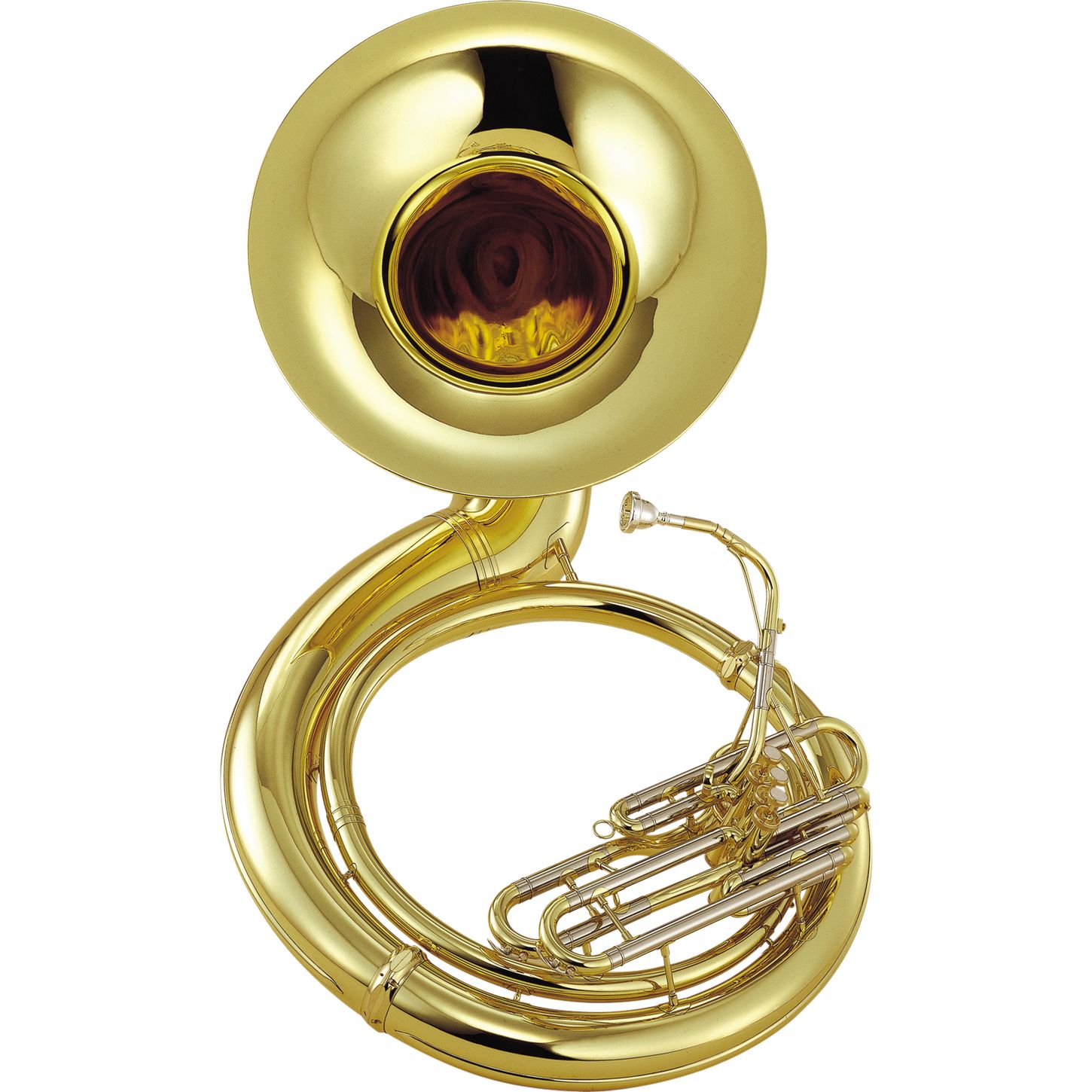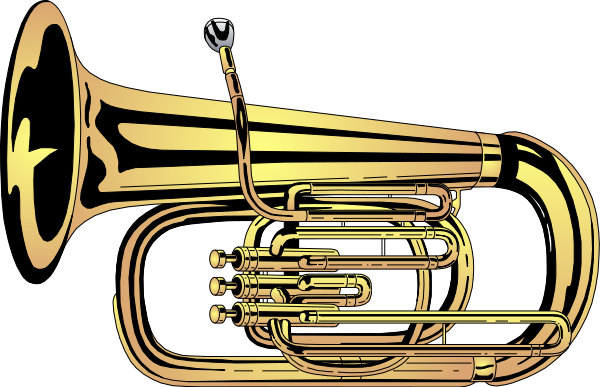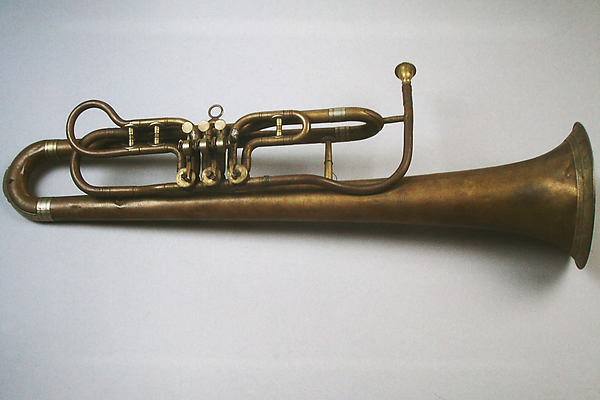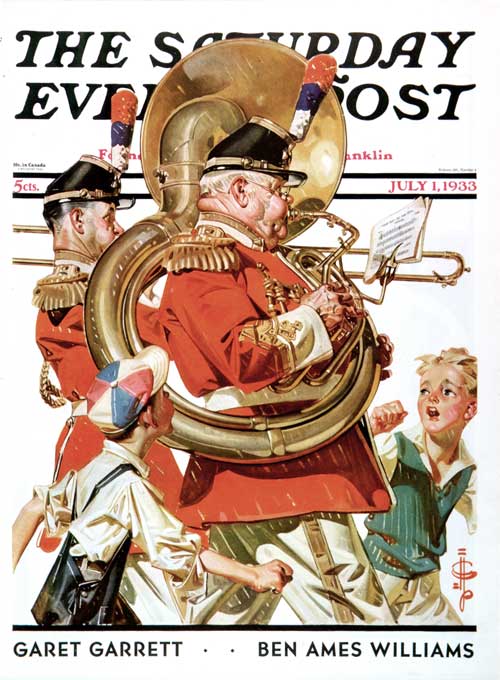"Blessed are they who see beautiful things in
humble places where other people see nothing."
AUTHOR: Camille Pissarro
MEANING OF THE QUOTE:
"Artistic people can see the
MEANING OF THE QUOTE:
"Artistic people can see the
beauty in ordinary things."


CAPRICCIO
PER TUBA SOLA (1980)
Pablo Guerrero Martín
Conservatorio Superior de Málaga


in 1980 and was performed for the first time
the same year at the "Warsaw Autumn,"
a festival of contemporary music,
by the Polish Tuba player Zdzislaw Piernik
a festival of contemporary music,
by the Polish Tuba player Zdzislaw Piernik
(who the piece was dedicated to).



PER TUBA
Scherzo alla polacca
Zdzislaw Piernik, Tuba
Zdzislaw Piernik, Tuba



The Capriccio has been written
in the traditional idiom apart from
fragments in which Penderecki uses the
highest and the lowest of the sounds that
highest and the lowest of the sounds that
can be extracted from the tuba performing in
large interval leaps requiring tremendous
technique of the tuba player to execute. Even
though this composition poses an enormous
challenge for the player, for the listener the
piece is pure pleasure to hear.



This staple of the not very extensive solo tuba
repertoire (most of the pieces written in the 20th
century) is a short, one-movement piece, easy to
listen to, but difficult for the performing tuba-player.



The subtitle Scherzo alla Polacca seems a subtle
reference to one story in Andrzej Munk's
film Eroica of 1958, based on Jerzy
Stefan Stawiński's screenplay.



The humorously "heroic" character of this piece is
most evident in its fast tempo and brisk rhythmic
motion, both quite at odds with the natural
qualities of the instrument.
http://analogartsensemble.net/blog/Capriccio%20for%20tuba.mp3
http://ninateka.pl/kolekcje/en/three-composers/penderecki/audio/capriccio-na-tube-solo


http://ninateka.pl/kolekcje/en/three-composers/penderecki/audio/capriccio-na-tube-solo


CAPRICCIO
PER TUBA
Scherzo alla polacca (1980)
instrument with valves and wide conical
bore. The word tuba originally was the
name of a straight-built Roman trumpet
and was the medieval Latin word for
trumpet. It was first patented by Prussian
bandmaster Wilhelm Wieprecht and
German instrument-builder Johann
Gottfried Moritz in 1835 and was soon



Tubas come in a number of keys: BB flat,
CC, E flat, F, and GG, though the tuba is
what is called a "non-transposing"
instrument, as its music is read and
played in concert pitch.
Early 5 Valve Tuba in F by Moritz c.1848-1850
 |
| http://www.madehow.com/Volume-5/Tuba.html |




Danny Kaye, Vocalist



MEET A PROFESSIONAL
TUBA PLAYER
Alan Baer, Philharmonic Principal Tuba
 |
| France Pellerin Publisher: Musique d'Infanterie Francaise, c. 1825 which Includes both a serpent and an ophicleide. |
INFORMATION FROM:
VIENNA SYMPHONIC LIBRARY
Since classical antiquity the name "tuba" has
The term tuba is derived from the Latin word
tuba (tuba) and in classical antiquity described
a cylindrical lip-vibrated instrument (the Roman
trumpet), which saw service principally
as a signaling instrument.
 |
| http://fineartamerica.com/featured/roman-trumpet-1723-granger.html |
However the name, which
found itself attached to a wide variety
of instruments over the centuries, was the
only thing this archaic instrument had
BAROQUE AND CLASSICAL MUSIC
THE TUBA'S RELATIVES
The tuba curva, a brass instrument made in
Paris in 1791 for the festivities following the
French Revolution, was modeled on the
Roman trumpet and is regarded as a fore-
runner of the modern tuba. This instrument
had a very powerful sound, no valves or
keys and a range limited to the
lowest naturals (partials).
keys and a range limited to the
lowest naturals (partials).


 |
| Erve H. Rijnders Printer: Netherlands Military Music, 1781-1854 Includes a serpent. |
tuba is the serpent,
about 213 cm long with six finger-holes and
a cup mouthpiece made of ivory or horn
which appeared in the 17th century. It was
placed beside the choir in French and English
churches to support the voices in full passages,
lending particular strength to the male voices.
churches to support the voices in full passages,
lending particular strength to the male voices.
serpent blended with the voices even more
effectively than the organ did, although Berlioz
was one who did not share this view. In his
opinion the instrument's sound blended
only poorly with the choir and was not
suitable for sensitive ears.
One of the serpent's weaknesses was the fact
that it was not possible to play any scale
accurately because notes a step apart were
played using the same fingering, pitch alterations
being possible only by varying lip-tension up
to an interval of a fourth. Changes in
volume also presented difficulties.
which was nothing unusual in 19th
century Italy. The premieres of Handel's
Fireworks Music (1749),
all featured the serpent. The instrument
remained in use for around 250
years, until the 1890's.
 |
| Regiment of Foot Guards in Front of St. James's Palace, c. 1790 Included among the soldier-musicians is a serpent player. |
orchestras only very rarely, although it
was a very common feature of
THE 19TH CENTURY:
In 1810 the Irishman Joseph Halliday
was granted a patent for a keyed bugle,
the so-called Royal Kent Bugle. This
conical instrument had copper tubing
(125–135 cm long with a diameter of
12–25 mm), a very fast flare to a 15
cm wide bell and at least six keys.
 |
| Silver Valve Horn |
This very agile instrument was used as
a powerful soprano instrument for playing
the melody line in brass bands, but was
only seldom asked for in symphony
orchestras (an exception is Rossini's
opera "Semiramide," 1823).
In France this instrument
was called the
trompette cromatique
or bugle à clefs,
in Germany it was
known as the Klappenhorn.
Because of the virtuosity of this
soprano instrument it was deemed
necessary to make a bass
In France this instrument
was called the
trompette cromatique
or bugle à clefs,
in Germany it was
known as the Klappenhorn.
 |
| http://www.europeana.eu/portal/record/09102/_ULEI_M0001718.html |
soprano instrument it was deemed
necessary to make a bass
counterpart: the century of the
ophicleide began.
had conical tubing made of brass (approx.
274 cm long, as on a Bb instrument, tube
274 cm long, as on a Bb instrument, tube
diameter 12.5–35.5 mm) with several
keyed side-holes and was used as a bass
keyed side-holes and was used as a bass
instrument until the end of the century.
By opening the holes the air column was
shortened and the pitch increased; it worked
on the same principle as woodwind instruments.
A number of naturals (partials) could then be
played from the fundamental tone thus produced.
The range, a maximum of around three octaves,
depended on the ability of the player. Intonation
was very uncertain because several fingerings
were possible for each note. The mouthpiece
was cup-shaped, with a flat rim, the bell faced
upward and had a diameter of about 21 cm.
The huge volume made great demands on the
breathing and the round, euphonium-like sound,
which was very rugged in the bass, was very
effective with brass played en masse. It
also blended very well with the choir.
From 1821 until the end of the 19th century the
ophicleide was widely used as a bass voice. It
Schumann,
Meyerbeer
(Robert Le Diable),
and Wagner.
Hector Berlioz required several ophicleides
in his Fantastic Symphony,
SYMPHONIE FANTASTIQUE
DIES IRAE SECTION
John Eliot Gardiner, Conductor
Orchestre Révolutionnaire et Romantique, 1993
 |
but he was also one of the first composers to
develop an enthusiasm for tubas, with which
develop an enthusiasm for tubas, with which
he proceeded to replace the ophicleides.Today
all ophicleide parts are played by the bass tuba.
From the 1820's onward numerous bass
instruments of similar construction, but with
different names, were built; in 1829,
for instance, W. Riedl made a valved
instrument in Vienna which was
modeled on the ophicleide and
for instance, W. Riedl made a valved
instrument in Vienna which was
modeled on the ophicleide and
became known as the bombardon.
 |
|
Similar to the ophicleide, which it
was designed to replace.
Has four Vienna (double-piston) valves
|
This wide-bored instrument had a powerful tone
and was still used in military bands after the
advent of the tuba. The French counterpart of
the bombardon was made by the industrious
for a group of valved brass instruments which
In 1835 Johann Moritz
and the trombonist
Wilhelm Wieprecht (1802–1872)
were granted a Prussian patent in Berlin
for which they called a bass tuba.
and the trombonist
Wilhelm Wieprecht (1802–1872)
were granted a Prussian patent in Berlin
for which they called a bass tuba.
Although valved instruments in the bass register
this was the first instrument to
bear the name bass tuba.
The bass tuba was made of brass,
keyed in F, and had five piston valves
were operated by the right hand,
the other two by the left.
The 1st and 2nd valves lowered the
fundamental note by a whole tone and
a semitone respectively in relation to
the key of F; the 3rd valve lowered the
instrument's tuning by a fourth, from F
to C. The 4th and 5th valves lowered the
pitch from C by a whole tone and a semi-
tone (wide half step, wide whole step)
respectively. The relatively narrow bore
meant that the bass notes were not
particularly loud or powerful.
In the course of the reorganization of
Prussian military music,
 |
Franco-Prussian War German Army Military Marching Band Music
Wood Engraving, 1884
|
Wieprecht introduced two bass tubas into
every band, which aided the instrument's
distribution and further development.
Because the gap between the 1st and
2nd naturals (partials) could not be
bridged on an instrument with three
valves, subsequent tubas were
made with four to six valves.
The fact that the bombardon and the
bass tuba existed at the same time often
led to confusion. Hector Berlioz described
Wieprecht's tuba as a bombardon with an
improved mechanism and stated that its
timbre was very much like that of the
ophicleide. In France, the tuba was known
for a long time as the ophicléide-à-pistons.
Two features distinguished the tuba from the
bombardon: the wide bore profile and the
valves, the new "Berlin pistons." The following
explanation helps to clear up the confusion
surrounding the two instruments: the bass
instrument used in military bands was called
the bombardon, while its counterpart in the
symphony orchestra was known as the tuba.
The tuba provided military and brass bands
with a satisfactory bass instrument and soon
found its way into the symphony orchestra, too.
The introduction of the tuba solved the
problem of a satisfactory bass voice in military
and wind bands. Despite this symphony
orchestras were slow to adopt it.
Hector Berlioz
first encountered the bass tuba on tour
in Germany and describes it as follows:
"In Prussia the bass tuba has replaced the
ophicleide; it is a large wind instrument with five
rotary valves which give it a large compass in the
low register. The low notes are blurred, but when
two tubas double an octave apart this produces
an enormous resonance. In the middle and upper
registers the sound is very refined and not as flat
as the ophicleide's, rich, vibrant and well-matched
to the timbre of the trombones and trumpets,
which the tuba serves as the bass voice."
Berlioz was one of the first composers to embrace
the tuba with enthusiasm, using it in virtually all his
scores in place of the ophicleide. Gradually the bass
tuba began appearing in various orchestras and by
the second half of the 19th century it had been
widely adopted in German orchestras.
The modern tuba has a widely flaring tube
and five or six valves. The bell of the
orchestral tuba points upward.
 |
| Orchestral Tuba |
Present day tubas have a fast rate of flare of
about 1:10 to 1:20 from mouthpiece to bell.
Pedals play well on account of the
wide conical bore.
Nowadays instruments with five or six
valves are the most widespread; this number
is necessary to be able to play the full chromatic
scale (eleven half steps downward) and to
ensure pure intonation. The bell of the
is used in wind bands and dance
bands, while the sousaphone
 |
| Sousaphone |
LINKS
http://www.alsmiddlebrasspages.com/brasshistory/tubahistory.html
http://www.rugs-n-relics.com/Brass/tubas/1850-Moritz-F-Tuba.html
http://www.vsl.co.at/en/70/3139/3153/3154/5493.vsl
http://orgs.usd.edu/nmm/Exhibitions/BeethovenBerlioz/BBBombardon.html
http://www.mim.be/fr/ophicleide?from_i_m=1
http://kimballtrombone.com/2010/ophicleide-history-and-images/
http://etd.lsu.edu/docs/available/etd-11062011-214738/unrestricted/boone_diss.pdf
http://www.lipscomb.edu/windbandhistory/rhodeswindband_05_19thcenturyeurope.htm
http://knowledgebase.lookseek.com/Tuba-Musical-Instrument.html
http://blog.sheetmusicplus.com/2013/02/06/10tubafacts/
http://jeanluc.matte.free.fr/articles/typologie/saxhorn.htm
http://www.wilktone.com/?p=211
http://www.euphstudy.com/tsurszure/history/history02.html
http://www.dwerden.com/forum/content.php/124-an-historical-lineage-
of-the-modern-baritone-horn-and-euphonium#.VY4bZvlVhBc
http://medleyana.com/tag/ophicleide/



OTHER WELL KNOWN
http://www.rugs-n-relics.com/Brass/tubas/1850-Moritz-F-Tuba.html
http://www.vsl.co.at/en/70/3139/3153/3154/5493.vsl
http://orgs.usd.edu/nmm/Exhibitions/BeethovenBerlioz/BBBombardon.html
http://www.mim.be/fr/ophicleide?from_i_m=1
http://kimballtrombone.com/2010/ophicleide-history-and-images/
http://etd.lsu.edu/docs/available/etd-11062011-214738/unrestricted/boone_diss.pdf
http://www.lipscomb.edu/windbandhistory/rhodeswindband_05_19thcenturyeurope.htm
http://knowledgebase.lookseek.com/Tuba-Musical-Instrument.html
http://blog.sheetmusicplus.com/2013/02/06/10tubafacts/
http://jeanluc.matte.free.fr/articles/typologie/saxhorn.htm
http://www.wilktone.com/?p=211
http://www.euphstudy.com/tsurszure/history/history02.html
http://www.dwerden.com/forum/content.php/124-an-historical-lineage-
of-the-modern-baritone-horn-and-euphonium#.VY4bZvlVhBc
http://medleyana.com/tag/ophicleide/



OTHER WELL KNOWN
AND INFLUENTIAL PARTS
AND SOLO MUSIC
AND SOLO MUSIC
FOR THE TUBA INCLUDE:
(orch. Ravel) Pictures at an Exhibition - Bydło

John Williams
Tuba Concerto

TUBA REPERTOIRE LINKS
xpdF9SZXBfVHViYS5wZGYiXV0/Lit%26Rep_Tuba.pdf?sha=736b34f7
https://www.uwl.ac.uk/sites/default/files/Academic
https://www.uwl.ac.uk/sites/default/files/Academic
-schools/London-College-of-Music/Web/LCM-Exams/PDF/Subjects/Brass/Tuba_2011.pdf
http://www.uni.edu/drfun/articles/Tuba_Lit_List.html
http://www.uni.edu/drfun/articles/Tuba_Lit_List.html
48446/tuba_solo_and_method_annotations.pdf
http://www.tubapeter.com/index_files/videos_tubasolos.htm
http://www.gcsu.edu/music/tubastandards.htm
https://en.wikipedia.org/wiki/Tuba
http://www.tubapeter.com/index_files/videos_tubasolos.htm
http://www.gcsu.edu/music/tubastandards.htm
https://en.wikipedia.org/wiki/Tuba


































































































